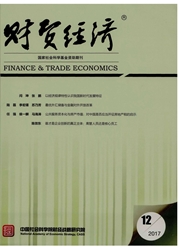

 中文摘要:
中文摘要:
基于省际面板数据的实证模型,本文揭示了中国劳动收入份额在短期经济波动(包括产出波动和价格波动)中的一般特征。研究显示,劳动收入份额在产出波动中具有显著的“逆周期”性,在价格上涨的过程中则呈现出“u型”变化轨迹。在控制了短期经济波动并考虑模型的动态性之后,我们认为20世纪90年代中期以来中国劳动收入份额的下降仅仅是一种短期“逆周期”现象,而并非伴随着长期经济增长的一般趋势。进一步的研究发现,“工资粘性”及中国劳动力市场中的某些特殊因素使劳动报酬不能随着产出增长和价格变化而迅速调整,是短期经济波动能够显著影响劳动收入份额的直接原因。
 英文摘要:
英文摘要:
Based on empirical study and using provincial panel data, this paper reveals the general characteristics of Chinese labor income share during the short-term economic fluctuations. Labor income share has significant "counter-cyclical" nature during the output fluctuations, but presents "U" shaped track with rising price. After controlling the short-term economic fluctuations and taking the dynamics of the model into account, we find that the decrease of Chinese labor income share since 1990s is just a short-term " counter-cyclical" phenomenon rather than a trend along with long-term economic growth. Further study finds that, it results from that "wage stickiness" and some special factors of Chinese labor market make labor payment cannot change with the output growth and price change.
 同期刊论文项目
同期刊论文项目
 同项目期刊论文
同项目期刊论文
 期刊信息
期刊信息
